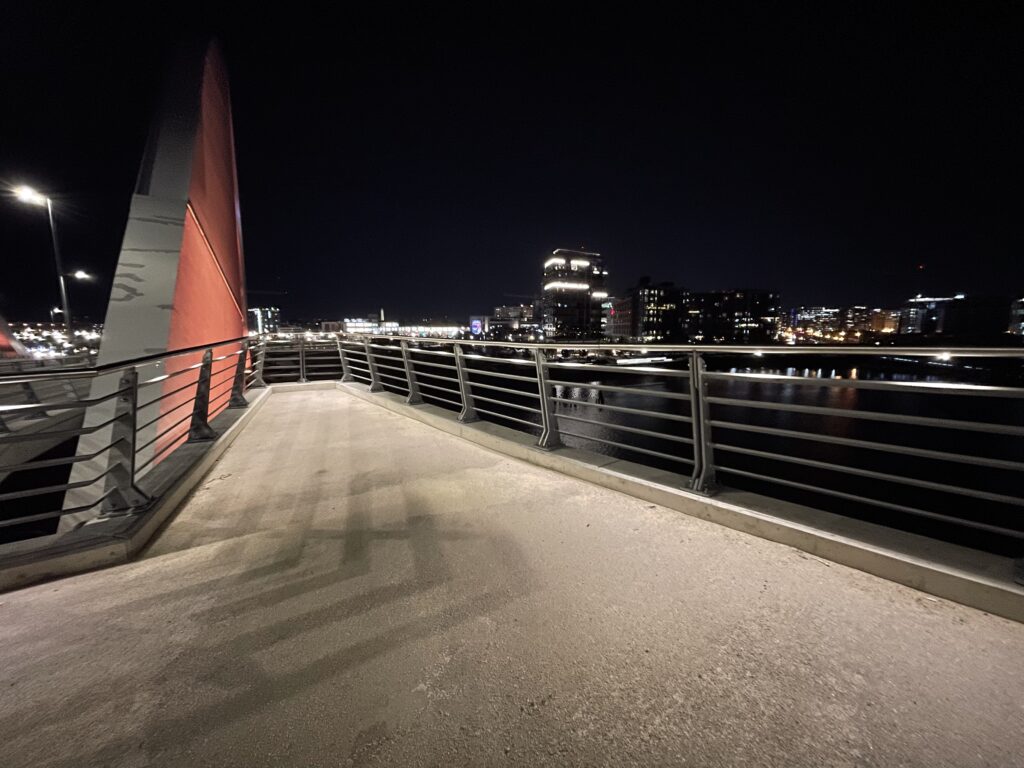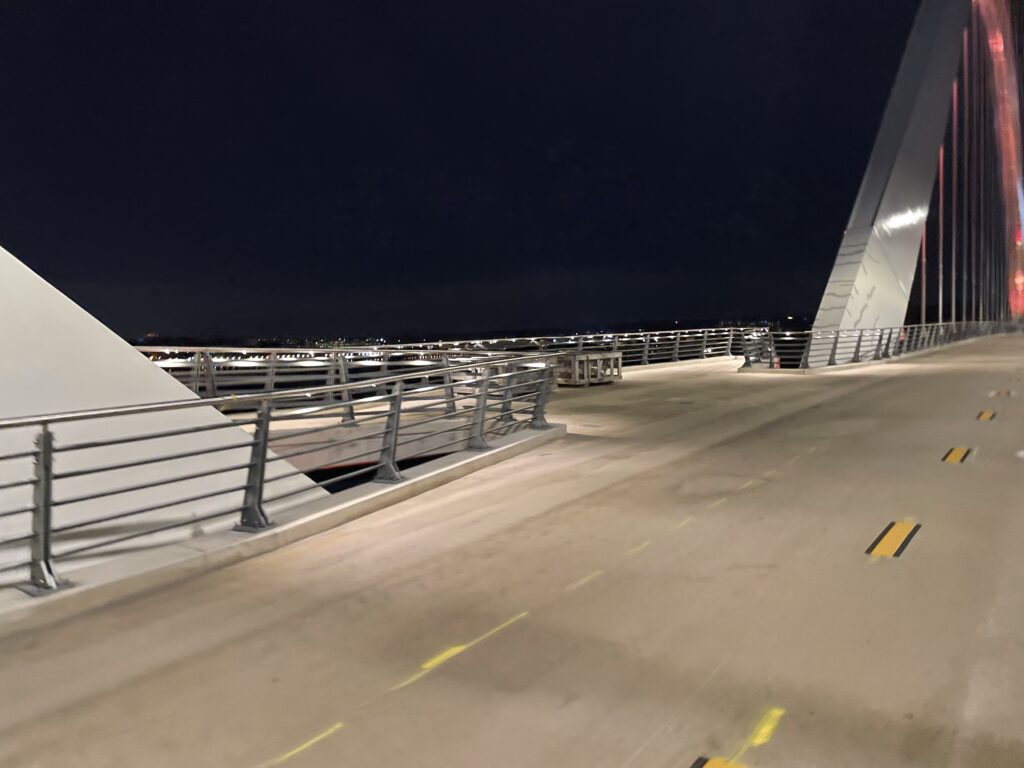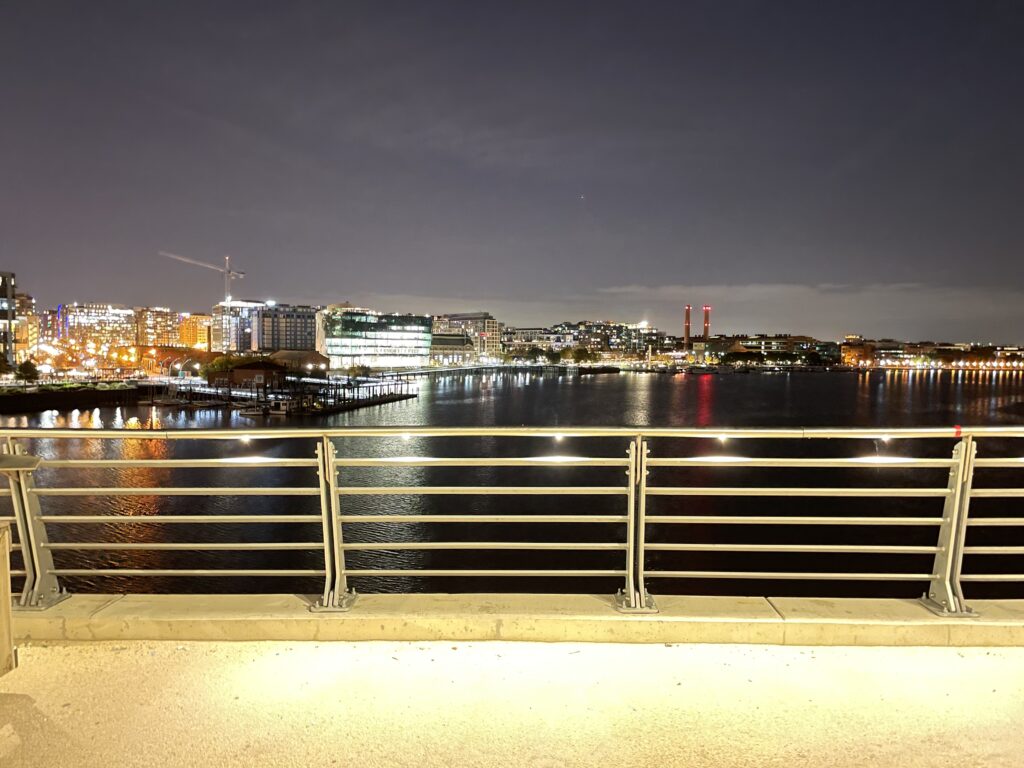As Washington D.C. sits alongside the historic Potomac River, with it comes many landmark bridges and more recently, an update to a bridge with a rich legacy. The Frederick Douglass Bridge was recently renovated after 70 years of public use and rededicated to Douglass. Formerly known as the South Capitol Street Bridge, the 1965 renaming was in honor of a revolutionary abolitionist and leader in United States history.
The Frederick Douglass Memorial Bridge Reconstruction Project began in the summer of 2017 and finished in the fall of 2022. Carrying over 77,000 commuters daily, the bridge serves as a main gateway for commuters and travelers alike. The original bridge, built in 1950, was supposed to serve its use for 50 years.
In 2007, significant structural problems were noticed; by 2017, the construction of the new bridge took place next to the old one. KLIK USA could not be more excited to be a part of the project with the feature of our LedPod XL28 as a guide to the bridge. The new project features six traffic lanes alongside a pedestrian and bike lane. With the addition of walking and biking lanes comes four pedestrian outlooks and two floating piers underneath with a view of the water and connection to the Anacostia Riverwalk. The bridge connects those on the border of Maryland and Washington D.C. to the heart of D.C.; it specifically can carry fans to the Nationals Stadium as easy access allows fans to walk the bridge into a lovely greenspace or straight to the game.
The bridge’s namesake, Frederick Douglass, was born in 1818 in Talbot County, Maryland to a mother who was a slave and a father who was unknown but thought to be one of the plantation owners of his mother. His mother was not present frequently in his life, dying around the age of 10 for Douglass. Despite bans on slaves learning to read and write, Douglass pursued education with the initial introduction from Sophia Auld, the wife of a Baltimore slaveowner. Ultimately, Sophia was forbidden from continued teaching, but Douglass sought his own education, choosing to continue reading and writing through whatever resources he could find. Douglass started to teach other slaves to read from the New Testament and was quickly sold when they found out about his teaching. Even with his new slave owner’s beatings due to his intelligence and desire to teach, Douglass eventually survived and managed to gain freedom after two attempts.
After his escape, Douglass soon married Anna Murray, and the two moved to New Bedford, Massachusetts to have five children. While there, the family worked on a newspaper, The North Star, and Douglass continued his abolition work. His first speech was in Nantucket, Massachusetts at the Massachusetts Anti-Slavery Society convention. After he wrote his autobiography in 1845, Douglass fled the United States to England and Ireland where he campaigned to buy his own freedom, doing so in 1847. Later, Douglass wrote two more autobiographies to detail the brutality of slavery. Douglass would continue on to be a staunch supporter of Women’s Rights, an ambassador and consultant to the United States and its leaders, a vice presidential nominee, minister-resident and consul-general to the Republic of Haiti, and a figure in African-American civil rights whose contributions will never be forgotten.



Sources:

